When the Tiger 1 was designed, some concepts and components from other Panzers were carried over into it, including a backup battery in the turret for the firing circuit.
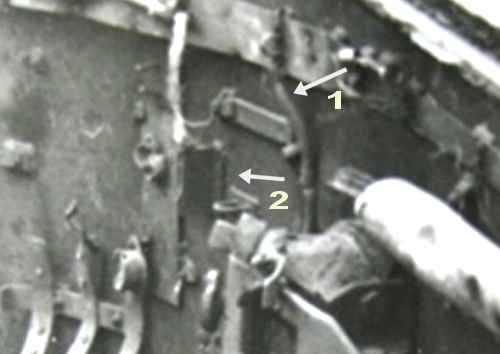
Although documentation of the Tiger's original turret layout is almost nonexistent, we can look into a very early Tiger, "132" of s.Pz.Abt.501 which was exploded in Tunisia. This is the inside left wall of its turret. The arrowed mounting strip (1) can only be for a backup battery; its length is a fit, and it's accessible to the gunner. It's especially telling that there is 5cm free space above the strip and 7cm below; because the battery extends to 4cm above its mounting tabs and 6cm below.
The dark rectangle (2) beside the battery position is exactly 60mm tall. That matches the size and shape of the battery's switch, discussed later in this article.
At some point early in the Tiger's history, when tanks were still being issued to s.Pz.Abt.501, the turret electronics were improved. A large circuit board was added. Some items were moved from the turret walls onto this board, including the backup battery and its switch.
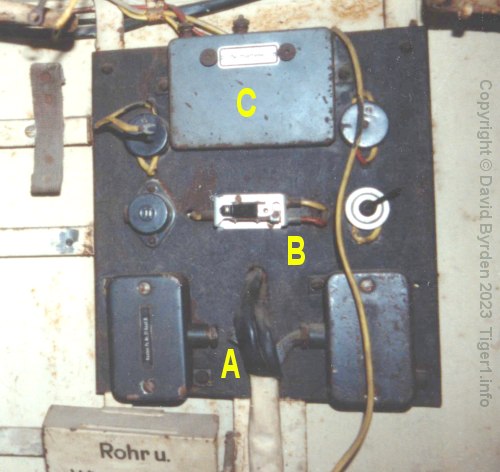
We can see this circuit board in Tiger "131" at Bovington museum, UK. This is again the left side of the turret. The battery [C] is at the top. [2]
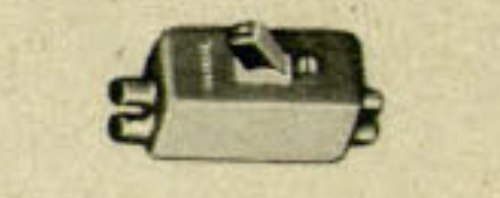
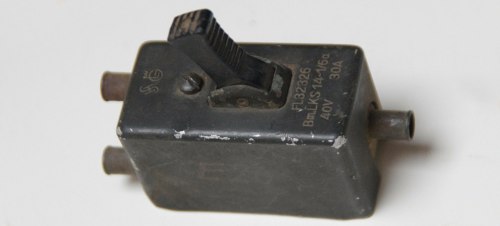
In the middle of the board is a switch [B]. This example has lost its protective cover, but here is its image from a Tiger manual [1] , and a complete example.
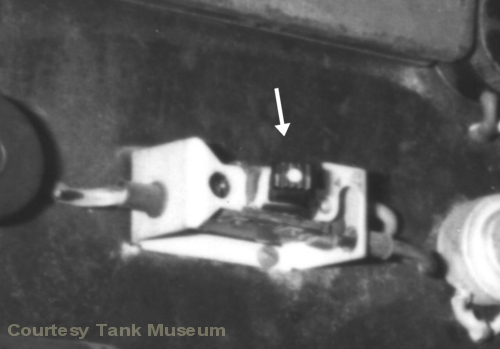
The battery is wired to the single terminal on the left of the switch. The 12V supply to the firing circuit passes through the two terminals on the other side. Upon failure of the Tiger's main battery, the switch can substitute the backup battery for firing the gun (and no other purpose).
The protruding black lever, with a white dot, can be moved left and right. It was probably pushed to the right to connect the backup battery.
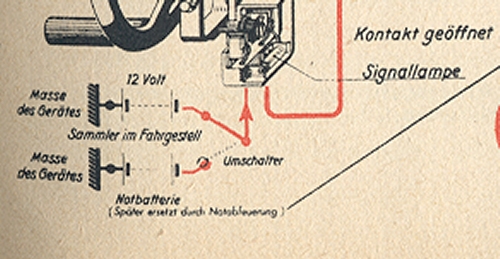
This diagram from the Tigerfibel [3, see page 57] shows the relevant circuit. At bottom left is the backup battery ("Notbatterie"). The switch ("Umschalter") selects between that and the main battery in the hull ("Sammler in Fahrgestell"). Both are grounded in the vehicle's frame ("Masse des Gerätes"). The output goes to the trigger lamp ("Signallampe").
The backup battery was probably present in all Tigers, including Command Tigers, until the turret was redesigned in mid 1943. Then the new induction firing switch, already provided to some Tiger crews in the field [4, see 3.4.2.6] , replaced the backup battery. [5]
[1] Kraftfahrgerät teil 3, Fahrgestell und Turm Panzerkampfwagen "Tiger", heft 60
[2] Survey of Tiger 250122, at Bovington museum, by David Byrden
[3] Tigerfibel (user's guide for the Tiger 1)
[4] DW to Tiger 1